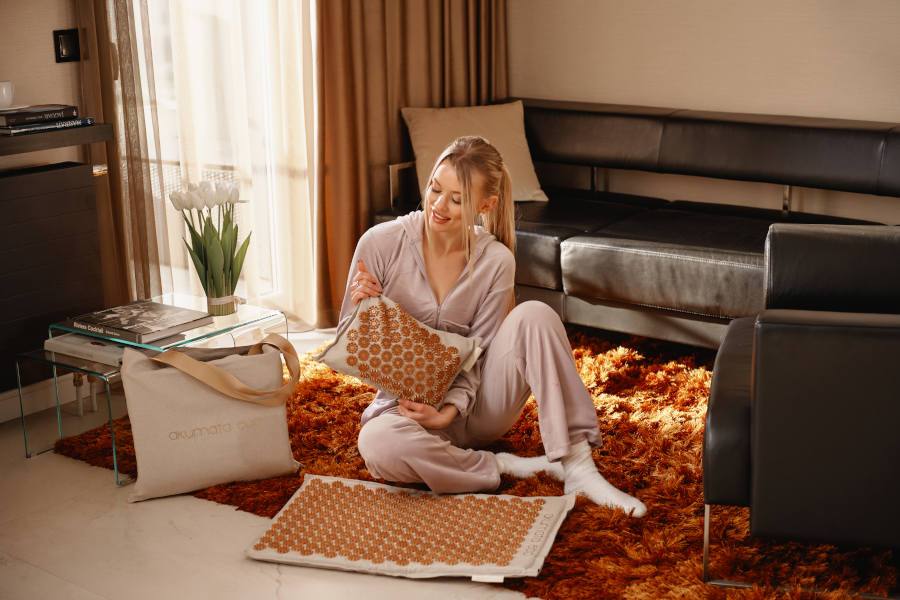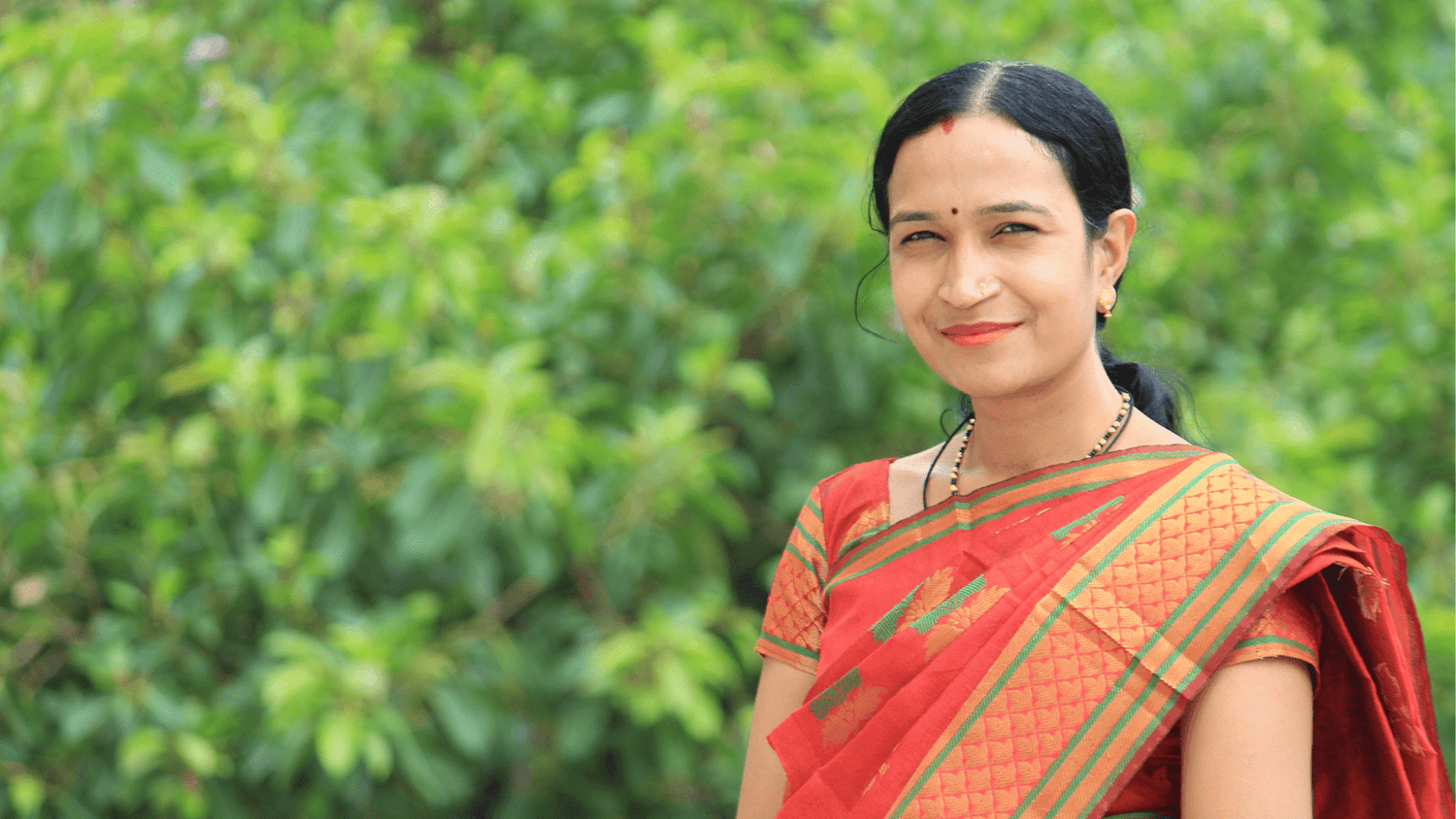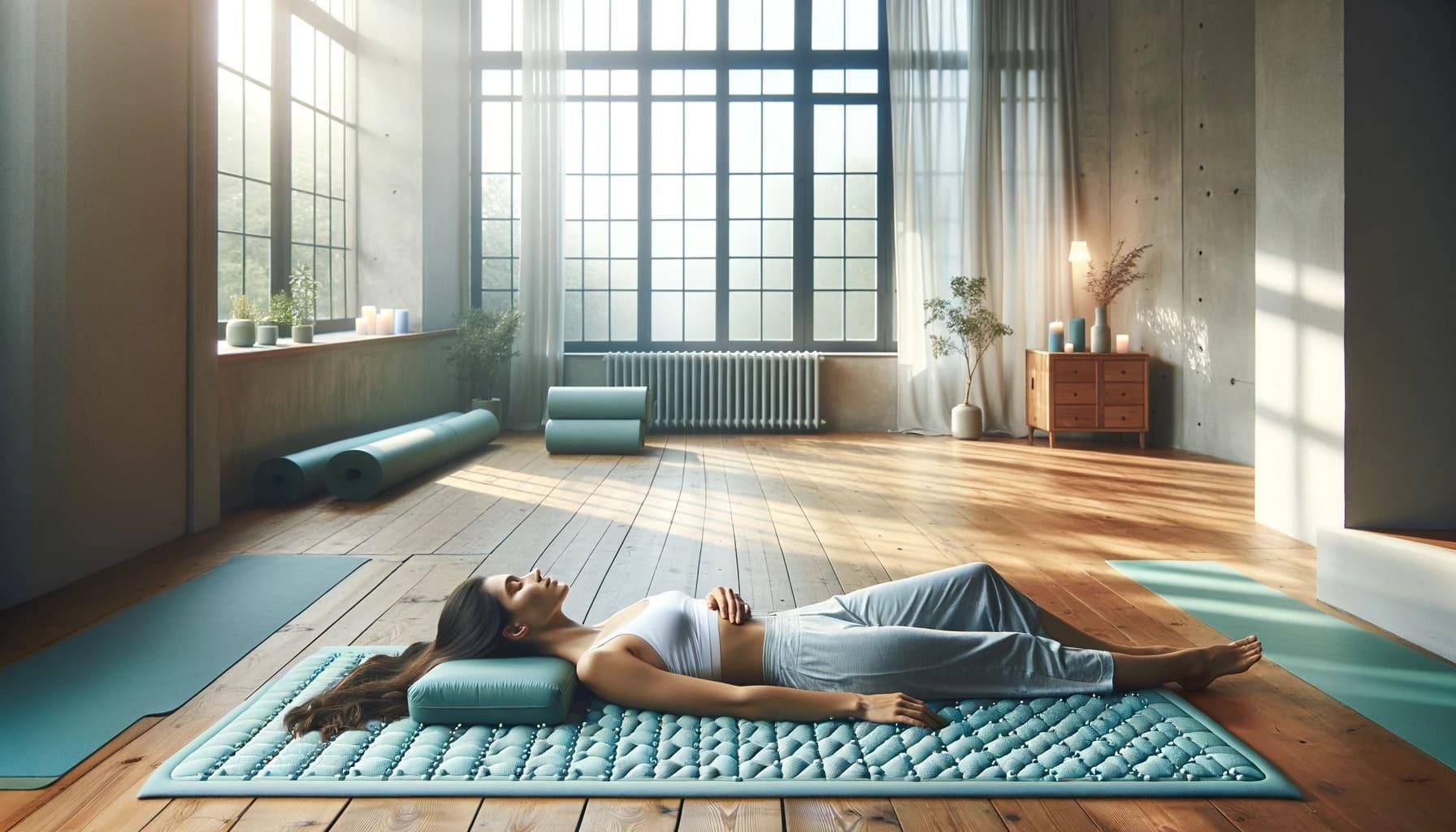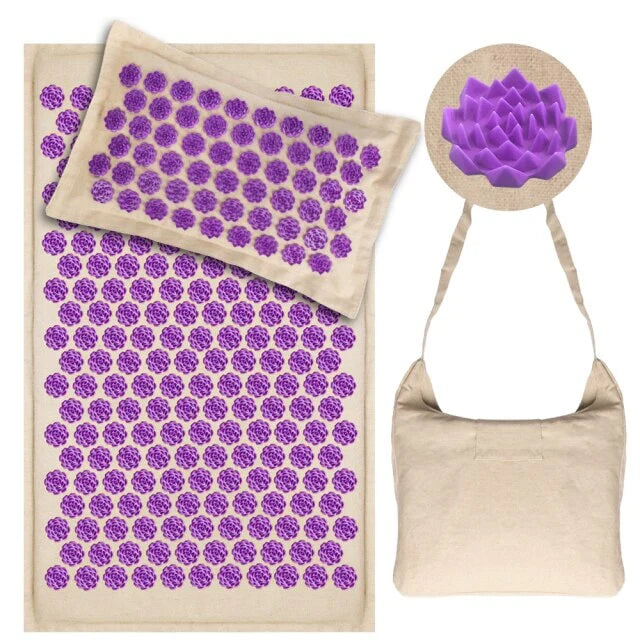Pitta is the second Dosha described in the Vedas. Pitta, or literally "bile", comes etymologically from the Sanskrit word tap, meaning "to cook, to transform things".
Pitta's primary function in Ayurveda is digestion. While Vata provides the impetus and initiates communication between the doshas, the Pitta dosha collects and assimilates information.
Pitta draws more from matter than Vata, which draws from air and space. It should be noted, however, that we are not setting up opposites between the doshas. Rather, we're pointing out the differences between each of the doshas' qualities, which form a perfect, total unity.
The Pitta dosha is the one that assimilates and transforms, master of our sight and digestion (both physical and mental). Logically, Pitta gives us the power to discern, apprehend and distinguish.
Knowing your dosha allows you to determine your birth constitution (Vata, Pitta and Kapha or one of their combinations) and what you are able to act upon to maintain balance and feel good.
Don't know your dosha? Take our dominant dosha test and discover the keys to understanding your lifestyle, your physical and mental balance, and advice on your diet.
Characteristics of the Pitta Dosha
Pitta has many qualities (Gunas): it is warm, oily, light, mobile, fragrant and penetrating. With the Pitta dosha, the digestive function is enabled by the union of fire (Tejas) and water (Jala). In this way, everything is consumed without destroying what's around it.
Pitta's main organ is the small intestine, although it is also strongly present in the stomach, blood, eyes and skin.
The constitution of the Pitta Dosha
Physical constitution
Pittas are of average build. They are neither too tall, nor too short, nor too fat, nor too thin. They gain muscle mass very quickly. Their complexion is fleshy, even scarlet, and they blush very easily.
Their bones are strong, but their gums can be irritable. Pitta hair is light-colored and fine, putting them at risk of baldness at an early age.
Other characteristics include sweaty, clammy hands and hot, humid skin. Their skin is very warm and moist, and therefore often soft. It can also have oily tendencies, and can even cause acne.
Pitta skin is also generally more hydrated than other types, and, as with Vata, must avoid excess of its element. This is why it's important to protect your skin from heat and sunlight.
In general, the natural body heat of a Pitta constitution leads to a lot of tissue inflammation and burning. In case of imbalance, they therefore tend to have inflammation problems, including acne, acidity or ulcers.
These problems are often caused by overeating, too much sun exposure, or too much physical or mental activity. The Pitta profile may then experience hot flashes, accelerated tension, a burning sensation in the body, headaches, an insatiable appetite, odorous perspiration, etc.
The challenge is to find the right balance between the two. The challenge is to find solutions to rebalance the Pitta dosha within them!
Psychic constitution
Pitta is an emotional cocktail of fire (action) and water (sensitivity). So, in the event of inner imbalance, Pittas may tend to be controlling, wanting to improve everything around them. They may feel dissatisfied and impatient.
In Ayurveda, Pitta are regularly on edge, and can quickly lose their temper. There's even a saying that unbalanced Pitta don't go to hell, but create it wherever they are. This same fire can be seen in their excellent libido.
These profiles have a very good critical mind and a facility for logic. Pitta people are sociable and enjoy public speaking and persuasion.
They have a natural charm and a will of steel. They also love to get involved in great causes. Many Pittas in Ayurveda are leaders, as they cultivate key qualities and characteristics, and enjoy making decisions.
Pittas are loyal and benevolent in friendship, but harsh and merciless against their detractors. They are characterized by bravery, which can sometimes turn out to be recklessness. The demands of a Pitta can be hard to bear, but the payoff is worth it, for a Pitta's trust and loyalty are unalterable.
Pitta profile keywords
- Warmth, lightness, speed, fluidity, liquid state and unctuousness.
So, choose foods, activities and treatments with the opposite characteristics to balance yourself.
Colors for Pitta
The colors best suited to Pitta are fresh and calming: green, pink, blue, gray-mauve, silver and white. Pitta profiles should avoid bright colors such as red and orange.
Lithotherapy for Pitta
In Ayurveda, Pitta people prefer light-colored stones, as well as silver and white gold. Pearls, moonstones, mother-of-pearl, selenite, coral, rose quartz, emerald, malachite, amazonite, jade, sapphire, amethyst and lapis lazuli are also suitable.
Summary of Pitta Dosha
- Elements : Fire and Water.
- Characteristic: energy of transformation, i.e., energy required for nutrient assimilation and digestion, thanks to the action of hormones and the regulation of body temperature. The Pitta dosha also manages determination.
- Pitta seats: liver, pancreas, duodenum, small intestine, skin and eyes.
- Senses associated with Pitta: sight.
- Stage of digestion: absorption of nutrients.
- Time of life when it intensifies: adulthood.
- Hours of the day: 10 a.m.-2 p.m. and 10 p.m.-2 a.m.
Pitta profile and health
Pitta people have an excellent appetite and can afford it, thanks to their digestive fire (agni). On the other hand, this profile must be careful not to go overboard.
With Pitta, it's all about listening to your own body. Generally speaking, they can afford to do just about anything up to the age of 40. After this age, their inner fire diminishes and they are forced to turn to a calmer life.
If Pitta's inner fire is too strong, it can lead to heartburn and acid reflux. More serious cases involve the development of ulcers. Pittas are also prone to diarrhea and colic, leading to severe dehydration.
Pitta blood circulation is excellent, as is the immune system. It is essential for a Pitta to eat in a calm environment. Anxiety or upset can often lead to digestive problems.
In other words, a Pitta profile's imbalances are generally felt through its digestion.
The keys to a balanced Pitta
Harmony and inner peace for a Pitta profile will necessarily involve relaxation and relativity. Pitta needs to learn temperance and moderation. He must accept that not everything is perfect or perfectible, and take a step back from things.
Another key for Pitta is communication, as its equilibrium depends to a large extent on its openness to others.
When Pitta is in harmony, it shines with intelligence, insight and courage. Conversely, when out of balance, they are impulsive, critical and angry.
The daily life of a Pitta
In Ayurveda, Pitta people are great sportsmen and women, and generally enjoy all forms of competition. They are constantly looking for an objective in their activities, and only act when a clear goal is in sight.
Pitta people like to solve problems and get their brains working. A common observation is that Pittas never rest, even if it's at the cost of their health. Pitta is radically opposed to Vata on the principle that everything begun must be completed. They have a strong will to achieve this.
It's vital for Pitta to rely on its logical strength and take the time to meditate and enjoy moments of intense reflection. The night is a propitious time for Pitta's fullness and resourcefulness, being effectively soothed by the light of the moon. Nature, too, is a strong ally for this profile, which can soothe and refocus through walks.
Pitta people shouldn't skip meals or wait until they're hungry to eat. They should prefer sweet and bitter flavors, as well as fresh vegetables such as cucumbers. A Pitta feels good only if he or she laughs a lot during the day and massages regularly.
Dietary advice for Pitta
For Pitta diets, we recommend :
- Eat a hearty breakfast, but a light dinner,
- Chew all food thoroughly,
- Take time to eat,
- Take the time to cook, to enjoy the moment, without seeking an objective other than pleasure,
- Never skip a meal.
When eating, we recommend favoring sweet, bitter and astringent flavors. Find all the foods to soothe Pitta in our dietary advice for the Pitta dosha.
You should also :
- Prefer water-rich fruit,
- Choose the following plant milks: almond, hazelnut, rice, coconut and spelt,
- Incorporate golden milk into your routine. Among other things, this turmeric-based drink drains the liver and reduces inflammation,
- Limit spices, especially hot ones that heat up the body,
- Avoid fried, processed, fermented, salty (e.g. potato chips, seafood) and acidic foods. This includes cheeses, beer, bread, pickles and vinegar,
- Avoid excessive consumption of meat and cow's milk, preferring goat's milk,
- Finally, as part of the Pitta diet, avoid excitants such as alcohol, coffee and tea.
Healthy living tips for Pitta people
For a healthy, balanced life:
- Slow down your pace of life by cultivating moderation and patience,
- Try to get at least 8 hours' sleep a night,
- Limit your exposure to the sun and prefer cooler weather, early morning or the end of the day for your activities,
- Take moonlit walks,
- Anticipate ailments associated with the change of season and carry out a Detox in autumn and spring. Choose Ayu'in's Ayurvedic Detox cure, which we've specially designed to be effective and easy to take in just 4 capsules a day. Mainly composed of a famous 3-fruit blend, Triphala, it will help you to eliminate toxins that interfere with your digestion and cause physical and psychological imbalances.
- Practice intense sports to let off steam, followed by a moment of relaxation, breathing or meditation,
- In yoga, follow gentle, calm postures and concentrate on stretching the Pitta organs, particularly the stomach and liver. Reduce standing postures that heat up the body, stretch the legs and favor gentle forward bends. Encourage lace-up, half-butterfly and sphinx postures (to stretch the stomach), as well as the gentle sequence of Chandra Namaskar, or moon salutation,
- Practice eye yoga in the morning to relieve eye tension,
- Dedicate time to activities you consider pleasurable and to leisure,
- Connect with nature, water and plants. Hiking and swimming, for example, will do you a world of good,
- Stay away from competitive situations.
Pitta skin care treatments
- Give priority to fresh, light and soothing treatments, especially in summer. Use refreshing oils, especially coconut oil,
- Massage your feet with coconut oil before bedtime. Use a Kansu bowl if you have one.
- For the face, an Aloe Vera mask provides deep hydration. Take an Aloe Vera leaf and remove the thin outer layer with a knife. Spread the pulp over your face. Leave for 20 minutes and remove any excess if the gel has not fully penetrated. If you don't have access to a real plant, use a tube of Aloe Vera gel, choosing a pure, high-quality formula. For oily skin, you can add mint floral water and chickpea flour to the pulp. Rinse with water after 20 minutes,
- Use essential oils, particularly peppermint, sandalwood, rose, German blue chamomile, coriander, lemon eucalyptus or lavender.








